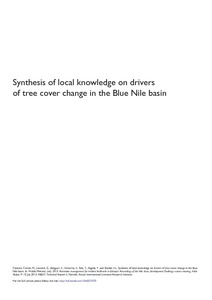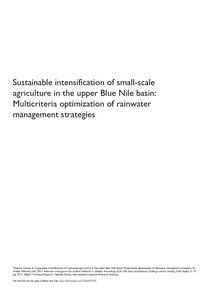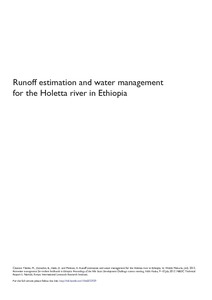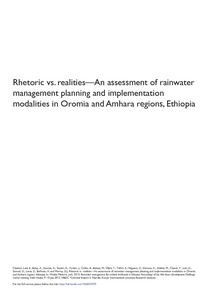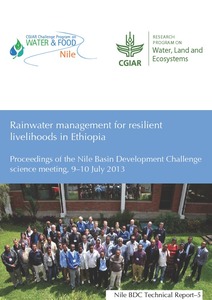Location
Vision, mission and strategy
ILRI's strategy 2013-2022 was approved in December 2012. It emerged from a wide processof consultation and engagement.
ILRI envisions... a world where all people have access to enough food and livelihood options to fulfil their potential.
ILRI’s mission is... to improve food and nutritional security and to reduce poverty in developing countries through research for efficient, safe and sustainable use of livestock—ensuring better lives through livestock.
ILRI’s three strategic objectives are:
- with partners, to develop, test, adapt and promote science-based practices that—being sustainable and scalable—achieve better lives through livestock.
- with partners,to provide compelling scientific evidence in ways that persuade decision-makers—from farms to boardrooms and parliaments—that smarter policies and bigger livestock investments can deliver significant socio-economic, health and environmental dividends to both poor nations and households.
- with partners,to increase capacity among ILRI’s key stakeholders to make better use of livestock science and investments for better lives through livestock.
This is ILRI’s second ten-year strategy. It incorporates a number of changes, many based on learning from the previous strategy (2000–2010, initially produced in 2000 and modified in 2002), an interim strategy (2011–2012) and an assessment of the external and internal environments in which the institute operates.
Members:
Resources
Displaying 371 - 375 of 1152Synthesis of local knowledge on drivers of tree cover change in the Blue Nile basin
The quantity and position of trees in a landscape can have significant impacts on farm soil and water resources. Here we present a synthesis of local knowledge studies conducted in three micro-catchments of the Blue Nile Basin (Diga, Fogera and Jeldu Woredas) exploring natural and anthropogenic drivers of tree cover change. In total more than 90 purposively selected farmers were interviewed, whilst focus group discussions and feedback sessions were held with larger groups.
Sustainable intensification of small-scale agriculture in the upper Blue Nile basin: Multicriteria optimization of rainwater management strategies
Using a multi-criteria optimization technique for system analysis, this paper quantitatively characterizes baseline production activities, resource management and environmental relationships of the mixed crop–livestock farming system at the Jaba micro-watershed, upper Blue Nile Basin, to get insights that inform sustainable intensification of small-scale agriculture.
Runoff estimation and water management for the Holetta river in Ethiopia
The hydrology of Holetta River and its seasonal variability is not fully studied. In addition to this, due to scarcity of the available surface water and increase in water demand for irrigation, the major users of the river are facing a challenge to allocate the available water. Therefore, the aim of this research was to investigate the water availability of Holetta River and to study the water management in the catchment. Soil and Water Assessment Tool (SWAT) modelled the rainfall runoff process of the catchment.
Rhetoric vs. realities—An assessment of rainwater management planning and implementation modalities in Oromia and Amhara regions, Ethiopia
This paper is the first in a series of three interrelated papers and focuses on planning and implementation modalities of Rainwater Management (RWM) Strategies. It is part of the NBDC project ‘On integrated RWM strategies—technologies, institutions and policies’. The project is underpinned by the recognition that integrated RWM needs to combine technologies, policies and institutions and be developed through multi-stakeholder engagement to foster innovation. Three woredas were selected for the research—Jeldu and Diga in Oromia Region and Fogera in Amhara Region.


